Wine Enthusiast |
| How to Go From Home Cook to Professional Recipe Developer Posted: 19 Aug 2021 04:30 AM PDT  Jenn de la Vega recalls an assignment from her seventh-grade teacher, Mr. Hill, that foreshadowed her future as a recipe developer. Mr. Hill told his class to write exact instructions on how to make a sandwich. If he could make the sandwich correctly, he would eat it. If he made it incorrectly, the kids had to eat their own creations. While most of the class dreamed up combinations like anchovies and peanut butter, de la Vega strived for simplicity and accuracy. "It was a ham and Swiss sandwich with mayo on one side and mustard on the other," she says. "It helped me understand writing for recipes." For every celebrity chef, television personality and cookbook author, there are many more professionals working behind the scenes to develop and perfect recipes. Recipe development involves researching dishes and techniques, shopping for ingredients, testing the dish or drink multiple times, recording every step and writing clear instructions others can easily follow. If you're a curious home cook or bartender with an eye for detail, there are lots of opportunities. To help you break into the field, six pros tell us their paths to careers in recipe development.  An Event Planner Changes CourseKara Mickelson was a corporate event planner for Toyota Motor Sales, a job for which she oversaw client trips to five-star resorts in far-flung destinations like Bora Bora. However, in 2007, Mickelson decided to nurture her love of cooking and enrolled in the now-shuttered Le Cordon Bleu College of Culinary Arts in Pasadena, California. While she originally intended to focus on food styling, her English degree, along with culinary school and the production skills she accumulated as an event planner, nudged Mickelson to recipe development. She began a new career with Southbay magazine and now develops for cookbooks, including the upcoming Friends: The Official Central Perk Cookbook.
For Mickelson, culinary school was essential to the transition from power suits to aprons. "There was a lot of depth in my classes, especially with the caliber of instructors I had," she says. "If you don't have foundational skills, it's hard to craft a recipe, especially when you get into baking." Because she is a freelancer, Mickelson's calendar is booked with a hodgepodge of projects: branded recipe development, cookbooks, seasonal recipe features, feature and travel writing, and food and prop styling. Most of these are executed in her small but functional home kitchen. Mickelson's Pro Tip: "A lot of my work comes through Facebook. There are lots of people out there looking for help, but there's also a lot of competition. It's about being bold, not pushy. You have to look out for yourself and maintain an online presence. Nobody's lining up to give you work." 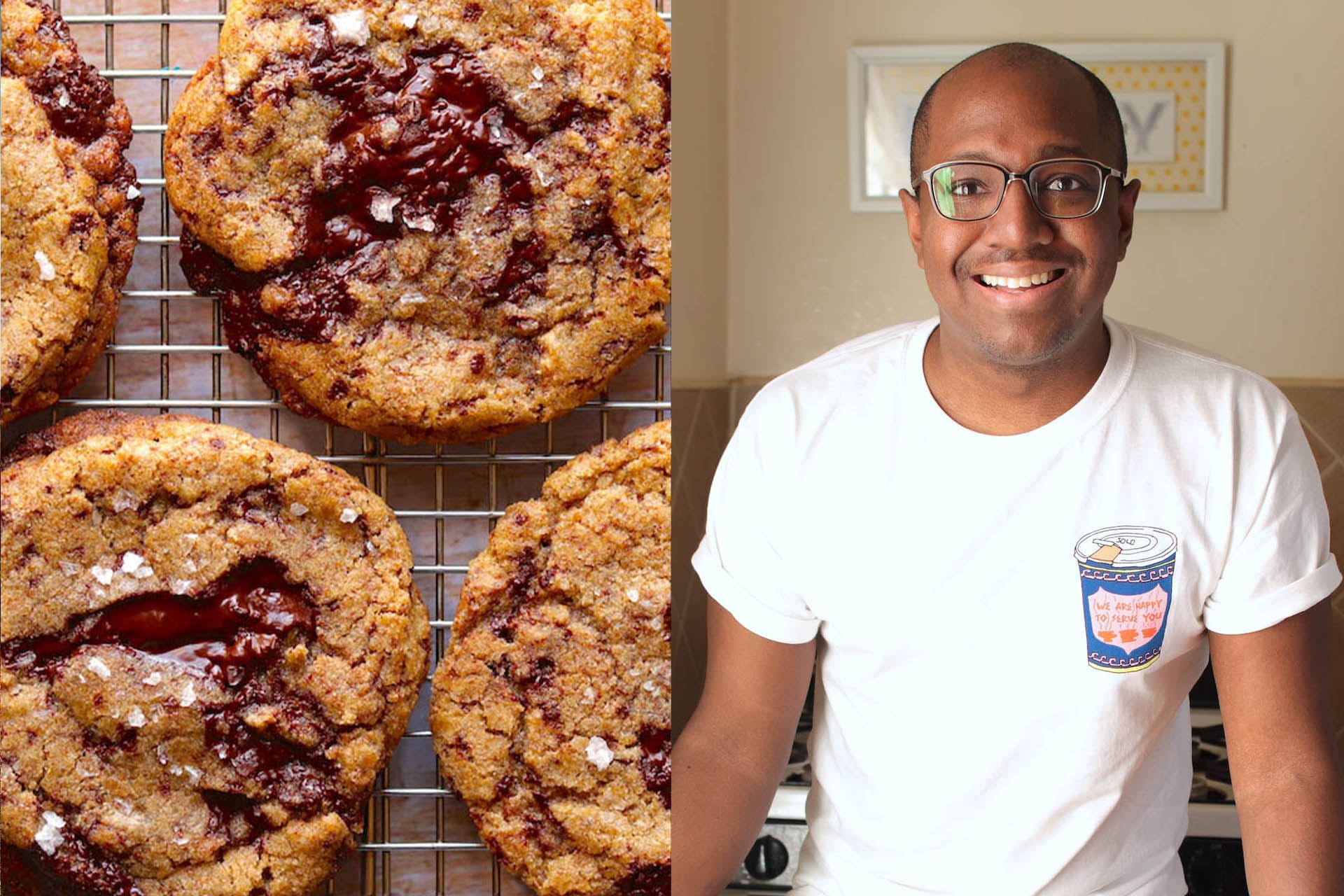 The Slow Build to a Staff PositionAaron Hutcherson launched The Hungry Hutch shortly after moving to New York City and starting a career on Wall Street. Like Mickelson, he turned to culinary school—in his case the French Culinary Institute, which is now part of the Institute of Culinary Education—to help solidify his kitchen skills and break into food media. It was slow going. "I would try and apply to any openings I saw in test kitchens and recipe development," says Hutcherson. "None of them worked out for some reason." He continued to create, photograph and post his own recipes, all unpaid. Eventually, brands and publications began to notice and Pillsbury contacted him about contributing to their site in 2015. This was followed by work for publications like Simply Recipes, Food52 and Taste. (Hutcherson has also written for Wine Enthusiast.) In 2020, a full 12 years after he began his food blog, Hutcherson joined The Washington Post as a writer and recipe developer.
It took persistence and time, says Hutcherson, for recipe development and writing to pay the bills. But now, for a major national newspaper, he's testing TikTok trends (like the failure that is pasta chips), teaching readers about summer squash varieties and developing a recipe for the perfect ranch dressing. He's also worked to advance his photography skills over the years, and WaPo occasionally runs Hutcherson's images. Unfortunately, because of Covid restrictions, Hutcherson is working from home without a dishwasher. "They're all washed by hand," he says. Hutcherson's Pro Tip: "One of the most important things is developing your palate. As much as possible, try new dishes and ingredients. Whenever I go out to eat, if there's a menu item or some combination I've never tried and don't know if it will work, I'm always like, 'Let me try and see.' Maybe I can take it back with me and use it in some capacity." 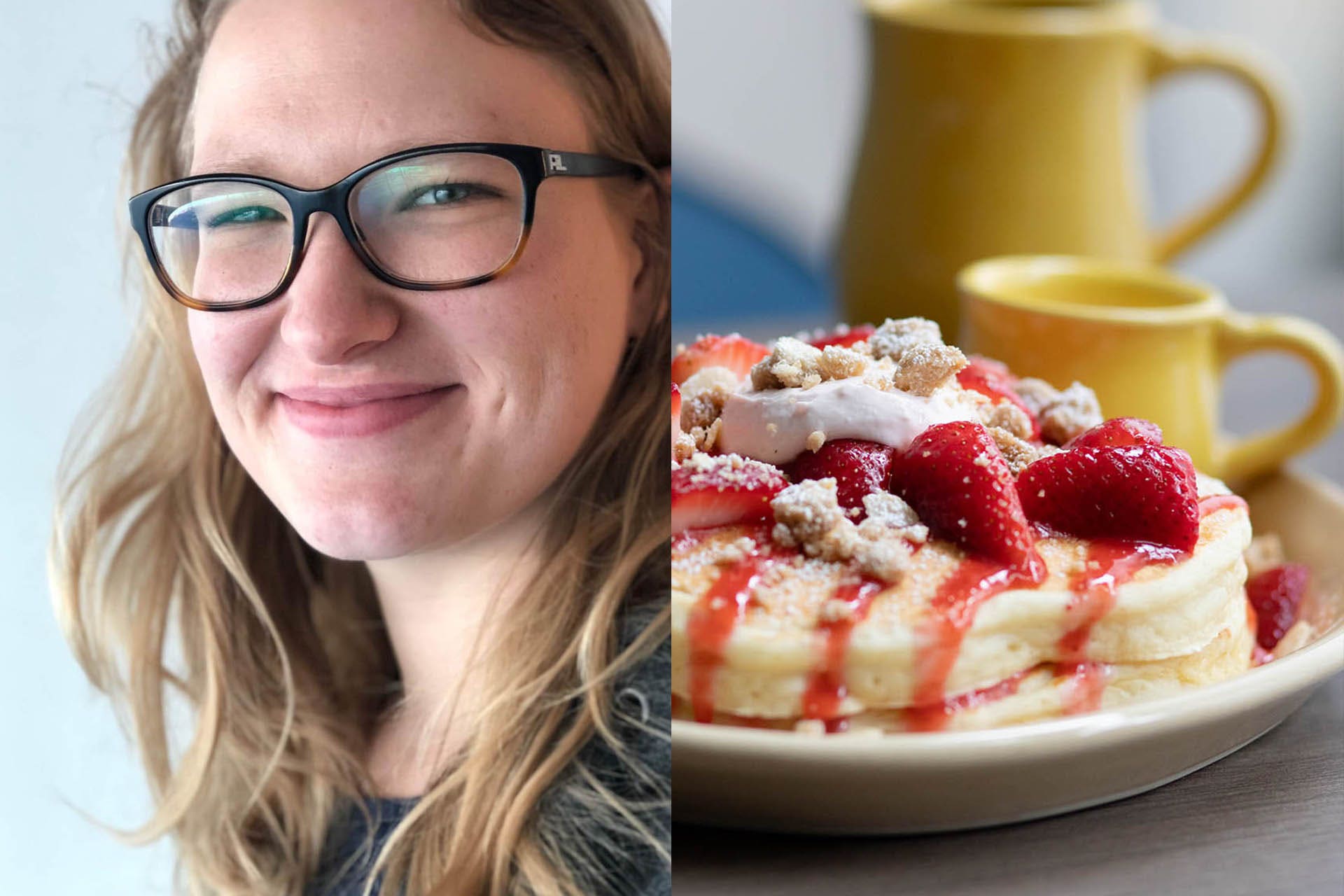 Writing Recipes for Working ChefsAfter high school, Ashlee Redger attended a four-year culinary program at Johnson & Wales University. She earned a degree in nutrition with a focus on research and development, and quickly earned a role with a regional spice company for whom she created consumer recipes and developed new products. After a three-month internship at America's Test Kitchen, Redger landed at Snooze, a breakfast-focused restaurant with 49 U.S. locations. At Snooze, she creates dishes that keep menus seasonal and relevant. Redger writes for an audience of professional cooks, not consumers. When she considers dishes, like a recent summery strawberry shortcake pancake plate, she must factor in practical concerns like ingredient costs, restaurants' existing pantry items and how quickly cooks can expedite the item.
In addition to the time in the kitchen, Redger writes recipes and training materials, leads corporate tastings, shops for supplies and participates in photo shoots. Although a degree gave her a clear path to her current job, Redger thinks hands-on training in kitchens, coupled with a writing curriculum, would have been just as beneficial—and less expensive. "Recipe development for me, the secret spice of it, comes from English and taking journalism classes," she says. "Anyone can create a wonderful dish, but you have to be able to communicate that to others. As with writing any other kind of essay or technical document, you need to write clearly and concisely and think ahead." Redger's Pro Tip: "Create a simple but professional portfolio, even if it's just on Instagram or a WordPress site. Having your name in the web domain is important, too. It's an easy way to showcase your work and gather it in one place." 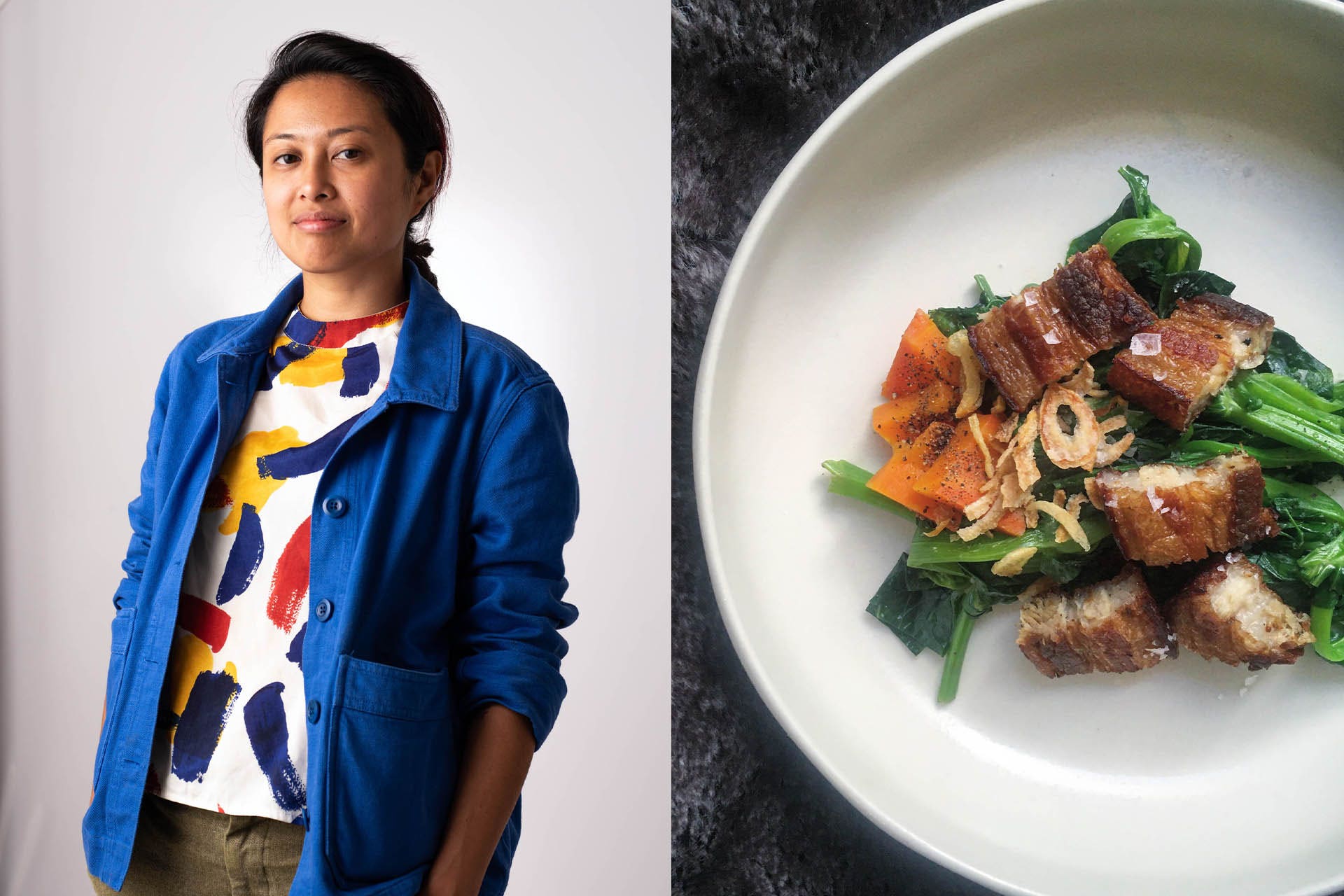 Catering as a Springboard to CookbooksDe la Vega took a wandering path to recipe development. Among other ventures, she got a degree in English, became an affineuse at Murray's Cheese, hosted a grilled cheese pop-up and led the kitchen at a small wine bar. Eventually, the wine bar started catering weddings, and de la Vega found herself reinventing and scaling restaurant dishes for events. "Recipe development requires that same level of exactitude," she says. "I didn't know it, but catering was setting me up for projects in the future." As focused as Redger's work is for Snooze, de la Vega's is the near opposite. She owns a catering company, edits the food zine Put A Egg On It, competes and judges culinary competitions and has completed residencies at an art gallery, Taste and Kickstarter. She wrote the cookbook Showdown: Comfort Food, Chili & BBQ in 2017, and also regularly contributes to Wine Enthusiast.
When catering work dried up last year, de la Vega turned her attention back to cookbooks, helping author Nicole Taylor with recipes for Tracy Morgan's The Last O.G. Cookbook. She has three more book projects in the works, focusing on cuisines from the Philippines, traditional island cultures and Black Americans. De la Vega believes it's her range of cooking expertise that has helped her secure work. "Culinary schools prioritize French cooking, and France isn't the only country that cooks," says de la Vega, who regularly scours cookbooks, brushes up on molecular gastronomy and studies techniques from across the globe. "I created my own intense self-study. I have my own reading regimen." De la Vega's Pro Tip: "Stay on top of what food writers are working on and see who's thinking about writing a book. As soon as I meet someone and we click, belief-wise with food, I plant that seed. I tell them, 'I would love to help you.' "  Recipe Development Yields a Lifestyle BrandWife and husband team Mary Cressler and Sean Martin launched Vindulge as a wine blog 11 years ago. A few years in, Cressler began to add recipes and wine pairing suggestions to the site. She scoured books like Will Write for Food and Ratio to learn how to write recipes, and studied food photography and styling to enhance her imagery and help draw in readers. Almost immediately, the recipes boosted site traffic, and Cressler and Martin started getting invitations to cook at wine events in the Willamette Valley. Soon, the two home cooks found themselves running an award-winning catering company. "We thought, 'How hard can that be?' " says Martin, with a laugh. A self-described backyard chef, he enlisted local chefs to help them dial in scaling and portions for crowds. As it did for de la Vega, catering and all its moving parts strengthened their recipe writing, which focuses on grilling, smoking and outdoor cooking. The couple published a cookbook, Fire + Wine, in March 2020. They continue to produce around 175 recipes a year for their site, in addition to recipe development for wineries like Phelps Creek, Mira and Stoller. This year, Cressler and Martin are launching an ecommerce wine site that will feature some of their favorite producers, with a wine club set to follow. The pair also plan on creating food and wine experiences on their five-acre farm in Oregon wine country. "Through recipe development, we were able to find out what we loved, and then create a new vision and dreams," says Cressler. "[Vindulge] is about finding great wines to pair and sharing great experiences with family and friends, and it all stems from that base idea of recipes." Cressler's Pro Tip: "Start by learning how to write a recipe. So often, when I Google something, it's so poorly written. Learn how to do it, then experiment, and make sure everything is tested." Martin's Pro Tip: "I've learned patience. People say, 'How come I'm not doing XYZ yet?' But over time, it will work out in your favor. I used to have a full-time job but quit in March, and the blog and brand now allows us to live our life without it being a side project. It's easy for us to look at other people's success, but it's better to focus on the audience that keeps coming back." |
| From Screaming Eagle to Sine Qua Non, The History of Cult Wines in the U.S. Posted: 19 Aug 2021 04:00 AM PDT  Twice a year, California winery Sine Qua Non sends out a note to its substantial waitlist. "If there is ever a task that I, good old Manfred, don’t like to perform, it is writing and sending this note," wrote co-owner Manfred Krankl in a 2019 missive. "Communicating about wines we sadly don’t have enough to offer to everyone interested is clearly a miserable task… Thank you so much for your patience and kindness. It is greatly appreciated. We are so happy you are there and can’t wait to get some juice to you." Sine Qua Non isn't the only winery for which demand outpaces supply. Waitlists are the norm for cult wines. But what is a "cult wine," exactly? While some winemakers dislike the term, it has come to encapsulate three main things: scarcity, high prices and quality. Many consider Napa Valley the birthplace of the cult wine phenomenon, and so its most famous grape, Cabernet Sauvignon, comprises many of the world's most sought-after cult wines. However, there are cult wines made from other grapes and in other regions around the world. As U.S. wine drinkers developed their palates in the latter half of the 20th century, reviewers played a large part in establishing the reputation of many of the country's enduring cult wines. Now, cult bottlings are generally only available to purchase if you're on the allocation list or via the secondary market. Napa's Cult-Like FollowingIn 2008, a billionaire purchased six magnums of Screaming Eagle's 1992 Cabernet Sauvignon for $500,000. Only 225 cases of the wine were ever made and it's among the most coveted brands worldwide. But Screaming Eagle's team never set out to make a cult wine. According to Heidi Barrett, Screaming Eagle's original winemaker, the brand didn't really exist in its current form when she began working there. She'd been making wine down the hill at Dalla Valle and the owners gave her a directive: "Go help Jean [Phillips, the founder of Screaming Eagle] make wine," she says. "It was a no-frills, pay-by-the-hour situation." In 1992, Barrett made 175 cases of Screaming Eagle. Phillips sold that Cabernet blend at Napa's famed Oakville Grocery, and it was on the list at Bistro Don Giovanni. But they also gave a lot of it away. When the owners of Screaming Eagle began entering the wine in local competitions, however, the kudos began to roll in. As whispers of how good Screaming Eagle was grew in volume, Phillips priced the wine at $75, an unprecedented move at a time when high-end domestic wines often maxed out at about $50. That led a friend, unbeknownst to Phillips and Barrett, to give the wine to Robert Parker to review. He initially gave it 99 points. However, after sitting with it for a while, he rescinded the score and re-scored it at 100 points. Some wondered if this sudden success was a fluke. But Screaming Eagle became globally renowned, and its success catapulted Heidi Barrett into the spotlight as one of the most respected consulting winemakers in the world. Around the same time, another winery producing a sought-after Cabernet blend, Harlan Estate, was emerging in Napa. Unlike Phillips, Harlan Estate founder Bill Harlan deliberately set out to create a notable wine, one that he calls a "California First Growth" of grand cru quality.
According to Brett Anderson, director of culture and communication at Harlan Family Wines, Harlan had a rather fortuitous call with Robert Mondavi in 1979 that persuaded him that he needed to make high quality wine. Mondavi promised that he would introduce Harlan to some of France’s greatest winemakers. A subsequent trip through Europe to meet with Mondavi's wine contacts convinced Harlan of Napa's potential for greatness. He used Burgundy and Bordeaux as models for his Napa site selection, viticulture and winemaking processes.  In 1984, Harlan bought 240 acres in the western hills of Napa Valley, on east-facing slopes. Thus began the rise of what would become a near-mythical wine: Harlan Estate. Using his same rigorous criteria for site selection, Harlan created single-vineyard, single variety wines in Napa Valley, all modeled after Burgundy's grand crus. That model would ultimately become BOND, Harlan's other cult classic label. Other Napa wineries included in the cult producer category include Bryant Family, Colgin, Dalla Valle, Dominus Estate, Eisele Vineyard Estate (formerly Araujo Winery), Hundred Acre, Scarecrow and Schrader. All of these wineries have long wait times for a spot on the allocation list, limited production, high prices, and most of the wineries themselves are closed to the public. Cult ExpansionCult wines aren't exclusive to Napa. In Santa Barbara County, on California's Central Coast, Sine Qua Non is aptly named. In Latin, the phrase roughly translates to "indispensable." While some may not believe that it's worth it to wait years to purchase a three, four or even five- figure wine, hardcore fans of the wine do exactly that. Co-owner Manfred Krankl previously helmed hot Los Angeles restaurant, Campanile. "As managing partner, I always loved wine, and always thought that being the 'wine guy' wasn't really a job," he says. "I allotted the job to myself because I always liked talking about wine…I always thought we should have a house wine. But restaurants always have house wine and it's always the worst wine." And so, he set out to create the antithesis of a lackluster "house wine." He tapped Bryan Babcock of Babcock Winery to help create Campanile's House Wine. Babcock readily agreed and the two decided that selling the house wine would be a one-time collaboration. Campanile's House Wine turned out to be a smash hit. Even Jim Dine, famed contemporary artist known for his graffiti-esque heart paintings, was smitten, and told Krankl that he'd let him use one of his paintings as a label in exchange for a few cases. Restaurant guests asked for more of the wine, and asked Krankl, "What's next?" But there was a slight problem. "Nothing was next," says Krankl. He had anticipated that his wine would only be made once. After some thought, however, he decided to try for round two and collaborated with a winemaker from Piedmont, Italy, and then from other regions. In 1994, Krankl thought, well I can do this myself, now. That was his first vintage. He made a Syrah from the highly regarded Bien Nacido Vineyard and then took it to Robert Parker. He told Parker, "I hope you like it." And Robert Parker did indeed. "Robert Parker called my wife and said he wanted a case and gave [the wine] 95 points," says Krankl. It sold out in one day. At the time, the Krankls were giving out their home phone number for wine orders, but Parker discouraged them from doing that since he saw the blow-up potential of the wine. "We were instantly set up," says Krankl regarding Parker's influence. "I never thought that it would be my livelihood or business per se; it was just a hobby. I had no idea what was coming down the pike."  Parker and influential critic Stephen Tanzer would come to dinner with the Krankls every year to taste the newest vintages. The momentum never slowed. Sine Qua Non's Rhône-style wines now feature grapes grown in its own vineyards, which are mostly planted on their own rootstocks. "Rhône wines always felt non-arrogant," says Krankl. "[They] always seemed fruity and juicy and fresh, and as I drank more and more and visited people over there [in the Rhône Valley], I liked them better and better." Beyond California, the concept of cult wine has also migrated to places like Walla Walla, Washington, home of Chris Figgins' Leonetti Cellar. Like many of Napa's cult bottlings, Leonetti Cellar's flagship bottling is also based on Cabernet Sauvignon. Leonetti became Walla Walla Valley’s first commercially bonded winery in 1977, and it wasted no time making an impression. The 1978 Cabernet vintage was a "big deal and launching point [for the winery]," says Figgins. "In the early '90s, high Parker scores and a Wine Spectator cover changed the nature of our business [to the point] where we weren't growing enough to meet demand." 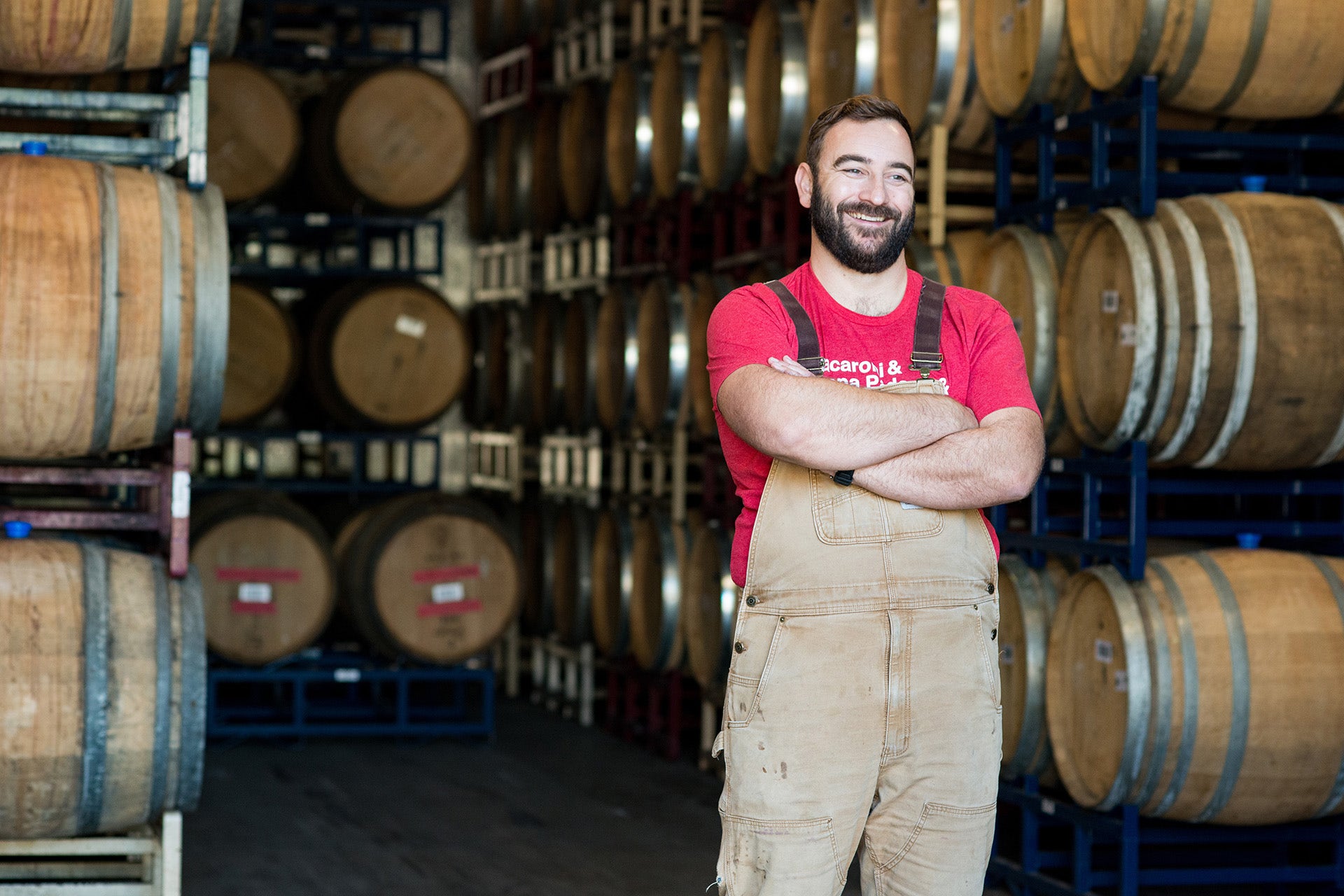 The New GuardIn recent years, the idea of a cult wine has evolved in the hands of some of America's young, maverick winemakers. Though the new guard's wines can cost hundreds of dollars, they are a far cry from the astronomical sums that plague the majority of predecessors like Screaming Eagle and Sine Qua Non. Some have open waitlists, too, so procuring wine is not out of the question. "It feels wrong for me to make a wine that's expensive," says Michael Cruse, founder of California's Ultramarine sparkling wines. Ultramarine is only about $80 on release, but the waitlist to get an allocation is about two years. "It was never [my] intention or thought to produce something that was hard to get," says Cruse. "The idea was to make something unique and special, and it's more of a fluke than anything else that it became so high in demand. For my part, I would like all my wines to be available because I want folks to taste them." He credits Champagne luminaries like Fred Savart, and producers like Vilmart et Cie, Chartogne-Taillet and Marie Noëlle Ledru as inspirations. But there's a reason there isn't much to go around. "It's so limited because we never wanted to make more until we knew we could sell it," says Cruse. "We have a waitlist because we have to have one." Like many of the wines on this list, Ultramarine can be procured on the secondary market from places like Verve Wine for around $200. "The secondary market is surprising to me, but I feel like if I can take care of my customers… then I don’t really need to pay attention to the secondary market," says Cruse. Down in Santa Barbara County, a winery with built-in pedigree continues to thrive. Under the same ownership as Screaming Eagle, Jonata Winemaker Matt Dees creates acclaimed wine from Bordeaux and Rhône varieties. Dees and team employ biodynamic farming practices in the vineyard, where great wine starts, and use unusual blends to showcase the merits of each grape of the blend. Jonata only seems to be known by a select few of in-the-know people, and its wines command prices in the hundreds of dollars.
In Napa, Promontory, the most recent of Bill Harlan's projects, commands around $800 per bottle, but it is the only one of his wineries that offers tasting experiences by appointment, while Harlan and BOND are closed to the public. Founded in 2008, Promontory is helmed by Bill's son Will, and ushers in a slightly younger demographic than Harlan's original labels. 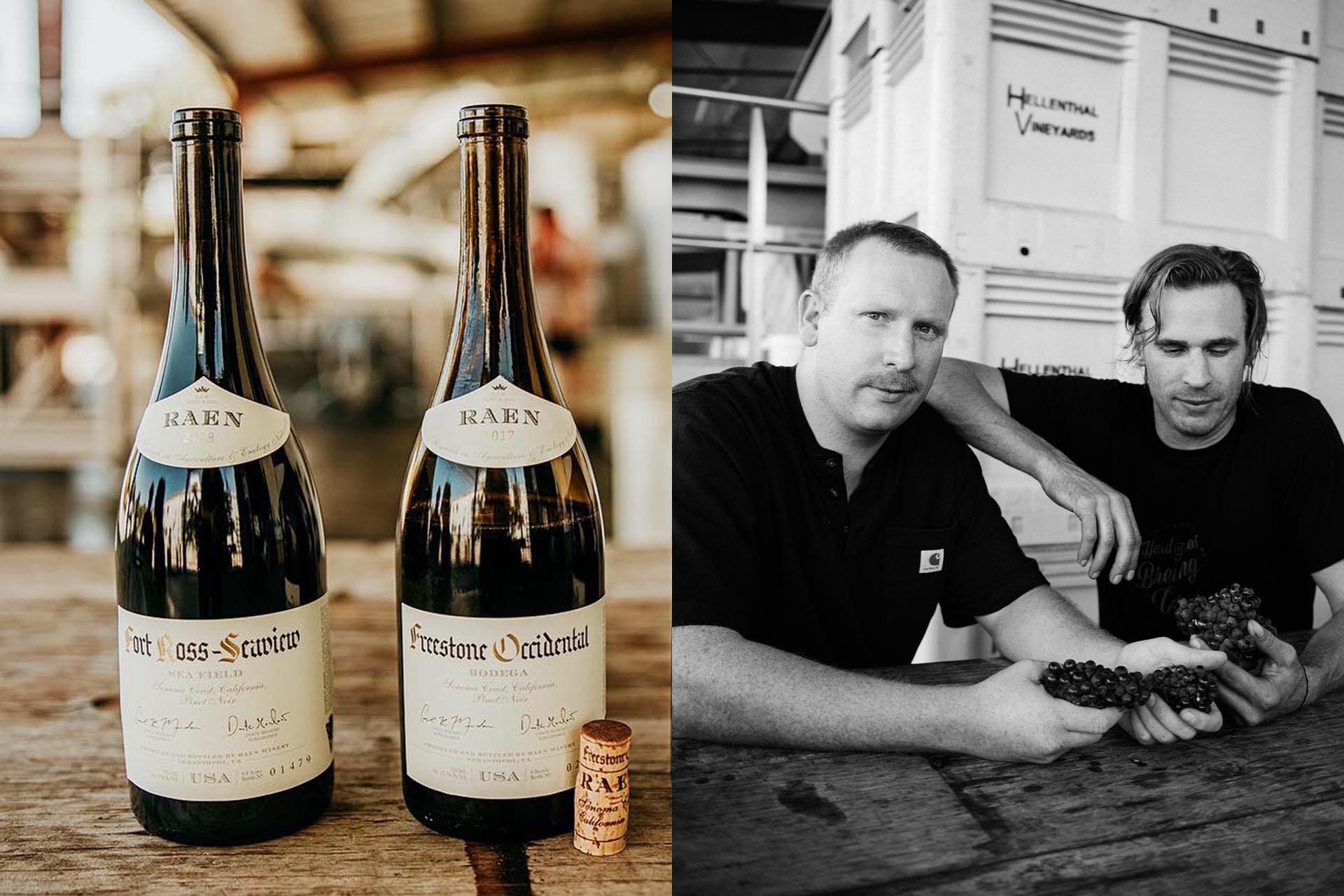 Brothers Carlo and Dante Mondavi decided to join their famous family's wine business but put their own spin on the cult category with their label, Raen. They source from three reputable vineyards in Sonoma County that sit at elevations ranging from 650 feet to nearly 1,300 feet above sea level. Though the mailing list for Raen is open right now, the consistently high scores, high quality and familial pedigree will propel Raen into the ranks of the top cult wines in the future. While the culture of cult wines has changed in tandem with U.S. and global tastes, the clamor for them, either from a multi-year waitlist or secondary market, shows no signs of slowing down. |
| You are subscribed to email updates from Wine Enthusiast. To stop receiving these emails, you may unsubscribe now. | Email delivery powered by Google |
| Google, 1600 Amphitheatre Parkway, Mountain View, CA 94043, United States | |

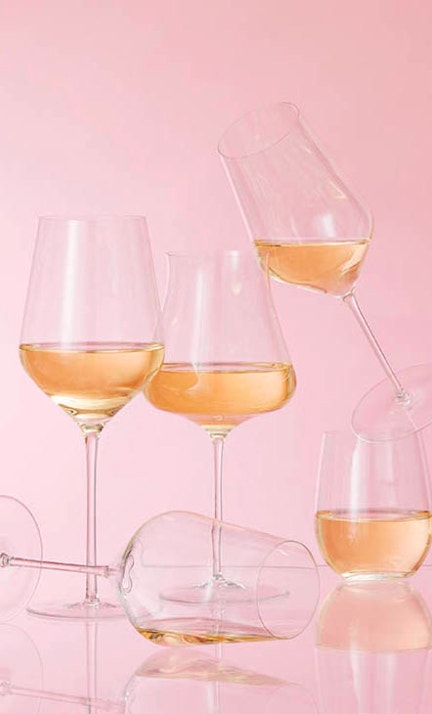
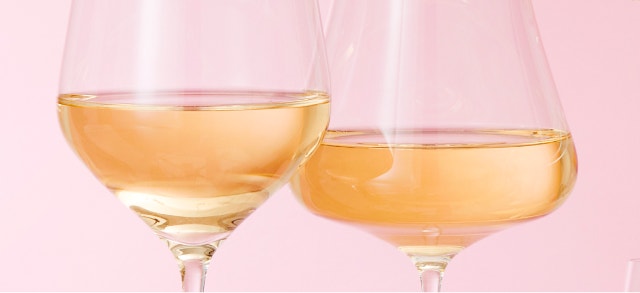














0 comments:
Post a Comment